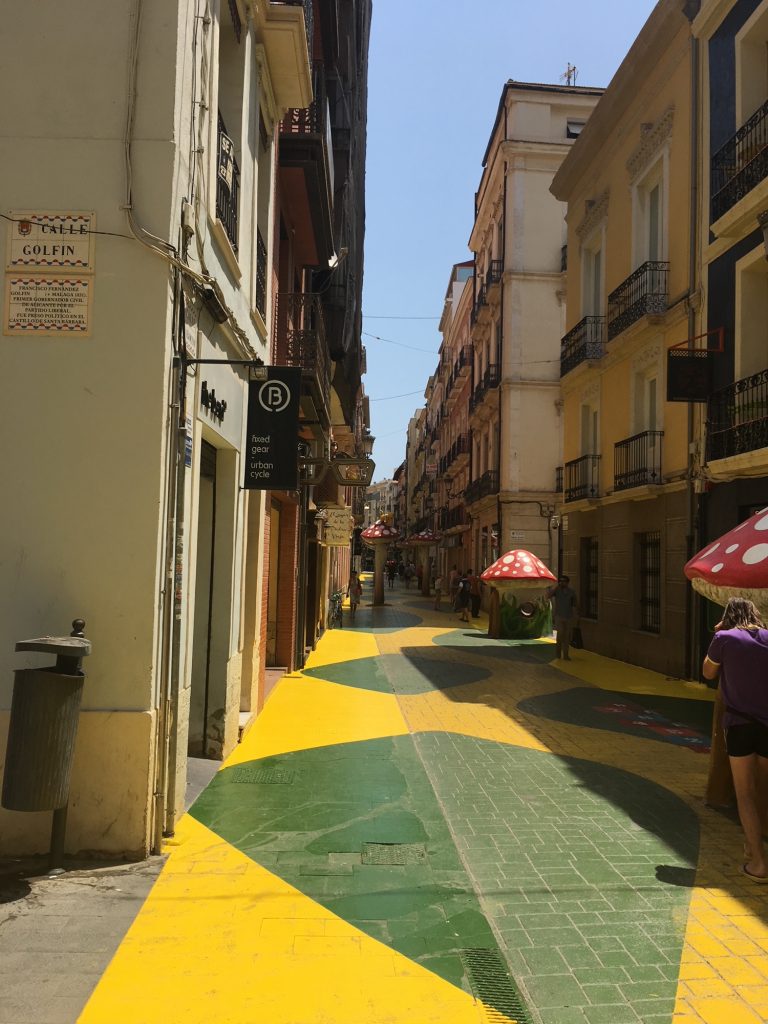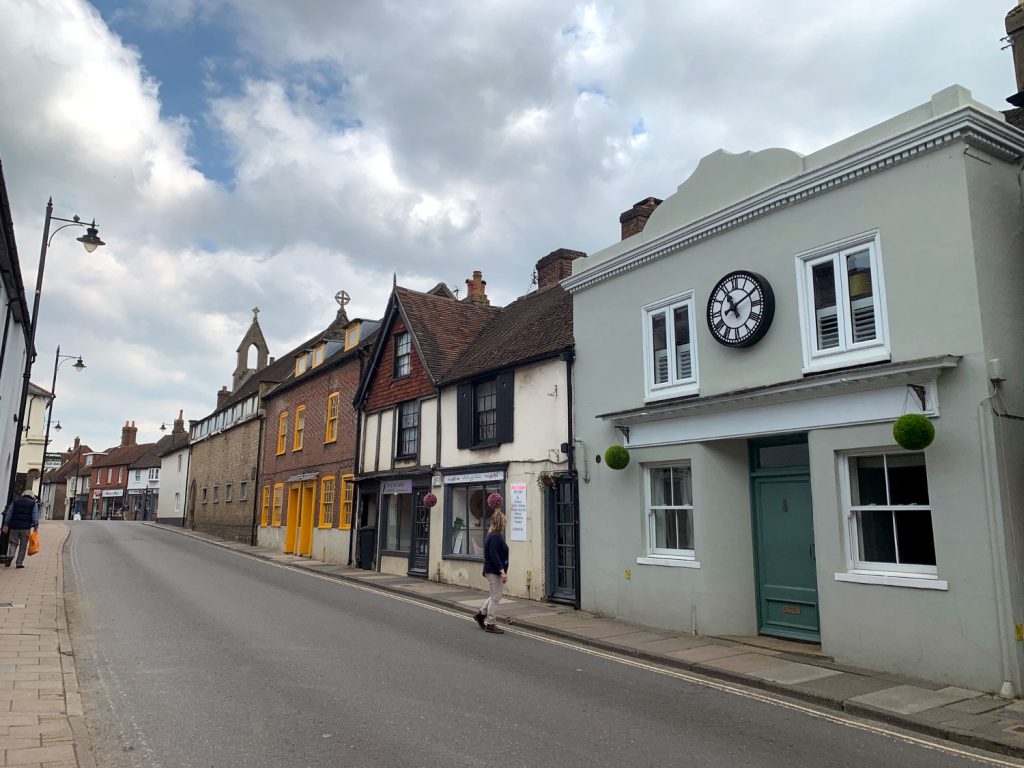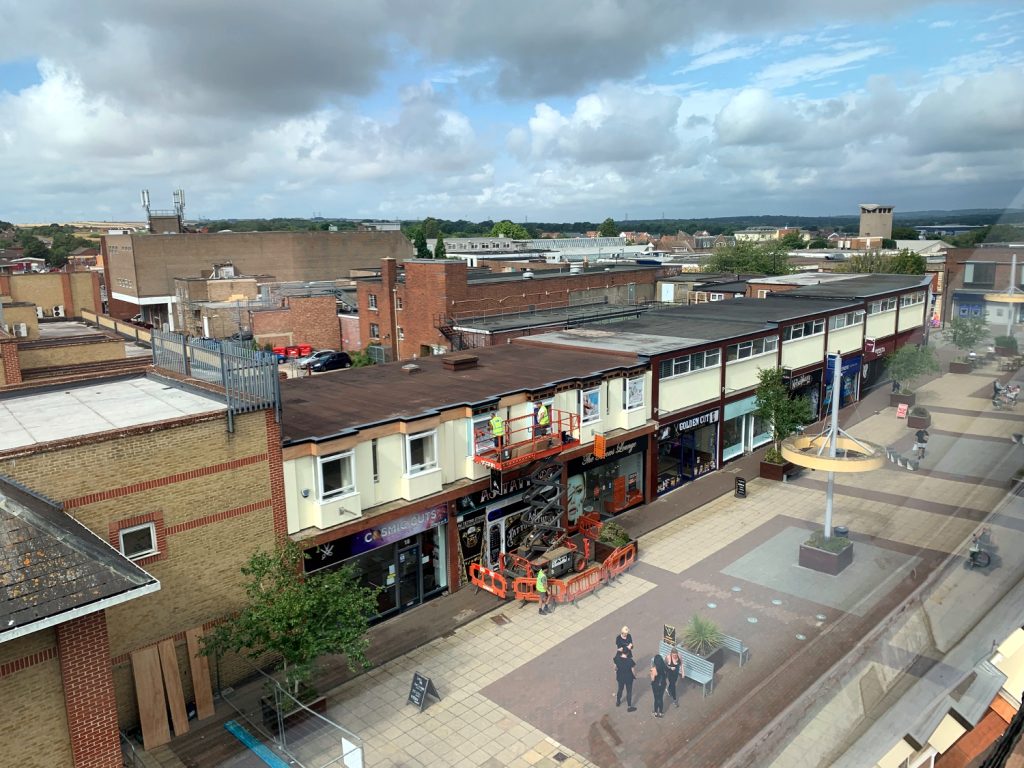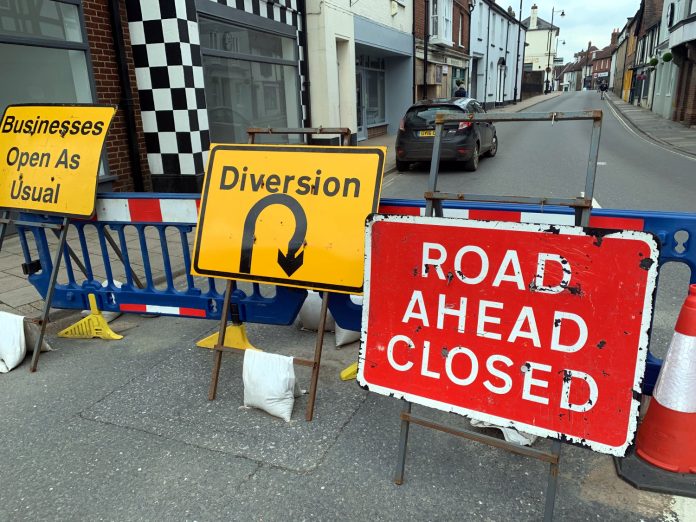Pedestrianisation what is it and why does it matter?
The Cambridge dictionary defines pedestrianisation as “to make an area into one where vehicles are not allowed to go”. Science Direct quotes Sustainable Transport in their online magazine describing how “In the beginning, pedestrianisation was limited to the streets with the highest concentration of large shops and pedestrian volumes, and was designed according to the model of a suburban shopping mall.” (1)
Creating separate spaces for people to walk, shop and sit together safely is important. At the end of June Jessica Murray reported in The Guardian how campaigners calling for better road safety took part in a street protest in the Kings Heath area of Birmingham. Residents in this Midlands community expressed their anger, grief and outrage about “those who drive at ‘terrifying speeds’ throughout the city.” (2)
The community called for change after “four people including two children died and four were also seriously injured by drivers, in separate incidents across the city” in one month in the surrounding area of Birmingham. Following the protest, the local council the leader of Birmingham City Council, John Cotton and his team committed to “working quickly” to act and improve the situation The Guardian then reported. (2)
For those commuting on foot and walking for leisure in Birmingham and all across the country the ideal type of streets for both safety and the vital health benefits of fresh air, are fully pedestrianised areas.
The pedestrianised gathering place is reminiscent of the European architectural model of having attractive centres with restaurants topped with apartments and offices that are all gathered around an attractive square or central area. This classic design creates public spaces that feel attractive to people of all ages and provides opportunities for markets, fountains, social events, concerts, sculptures and artworks and other distinctive urban cultural highlights and seasonal displays.

Photo by A Howse
The French and Spanish (and many other countries in Europe) café culture is at its best in a pedestrianised location where town and city dwellers can easily meet and see each other and be seen. The rectangular plazas enable the greatest choice of shade for outdoor dining during the hot summer months.

The English Victorians loved a decorative wide pathway exclusively designed for elegant strolling and they especially loved ‘to promenade’ along their most fashionable seaside destinations without worrying about sharing their special walkways with any unexpected traffic. The pedestrianised promenades also allowed eligible men and women of the middle and upper classes to be visible and meet within the strict social protocols of the time.
In the 21st century pedestrianised locations benefit both retail and hospitality businesses through increased visitor numbers or ‘footfall’. This is because locals and tourists choose to visit and stay longer as they enjoy a relaxing leisure experience in fresh air. Caring for people who have special needs or need accompanying and looking after young children and dogs is much easier in an environment without transport related hazards. There is a noise reduction effect which also adds to the charms of pedestrianisation for many, especially those who are neurodiverse or have sensory issues.
Pedestrianisation: what does it take to achieve?
How easy it is to permanently pedestrianize a town or city depends on many factors. The option to divert existing traffic through one or more alternative routes is key to successful pedestrianisation. Temporarily diverting the high street involves a ‘multi-agency effort’. This means it is logical that in order to permanently ban cars, motorbikes and commercial vehicles from the high street, many utilities companies, local planners, resident’s associations, businesses and organisations need to be brought together to develop a workable local plan. All these interest groups have to discuss and agree the best way forward for the design of their community centres.

Towns and cities of all sizes could be considered for pedestrianisation in the near future. This August there is a controversial trend to prevent drivers entering commercial and community centres. Later this month the ULEZ fee in London is applied to many more districts and the area the ULEZ covers is expanded much further to cover more of Greater London.
The Ultra Low Emissions Zone Charge is paid daily by all petrol and diesel cars and vehicles entering the ULEZ even if they live just outside the zone. This ULEZ fee is in addition to the existing daily congestion zone penalty charge in the West End centre of London. The new ULEZ tariff is also in addition to current road and sales taxes and income taxes currently paid by drivers and workers trying to get to and from their employment (and childcare settings) by car and commercial vehicle. (3)
Pedestrianisation Examples and Considerations
Last year James Pollard wrote in an open letter to The Guardian highlighting the advantages for pedestrianising Oxford Street in the West End of London, which has been full of buses, traffic and pollution for nearly a century. Pollard argues that it is an opportunity for controlling the swelling number of shops on this famous high street that mostly sell unhealthy sweets and candy, to tourists, shoppers and workers who live in the capital. (4)
Construction and logistics firm Crowdguard wrote about how “There is a balancing act to be achieved by addressing the challenges of public health, social inequality and climate and ecological emergencies with pedestrianisation on the one hand, while being mindful of the practical needs of city dwellers and small business owners on the other.” (5)
Gunwharf Keys in Portsmouth, Hampshire is a good example of a relatively new pedestrianised commercial centre which is popular and successful all year around. Gunwharf Quays features a large Plaza which is used for a variety of celebrations and activities for children and families. (6)
However, in Gunwharf Quays in Portsmouth is expensive to park for the day compared to other free out of town retail developments nearby. The free ‘Park and Ride’ is only a convenient service if one has plenty of time to wait for the shuttle buses (scheduled every fifteen minutes plus an eleven-minute bus journey) and you are not planning to buy any heavy purchases or travel home much later in the evening after a meal, the cinema or just some late-night shopping. (6)
It is important that all the users of the town centre are considered when developing a new plan for pedestrianisation. This ensures that emergency services can still access key public areas quickly and those with disabled badges and special mobility needs can park their vehicles easily.
Shoppers in town centres want to conveniently park their cars and pick up their purchases and perhaps even large items like furniture from stores along the high street. This is particularly the case if they have been doing just that for many years and feeling good about supporting local businesses before ‘down town’ became pedestrianised. Otherwise, if a trip becomes more inconvenient or impractical, they may think twice about spending their money in their local town centre and be tempted to select other out of town retailers further afield instead, or opt for online stores that can offer free home delivery.

Pedestrianisation is not a new concept but it is a city planning format that has thus far stood the test of time in the UK. There are no guarantees of success however. It takes many positive interest groups working in combination to make a cultural and commercial centre that can thrive, despite the unexpected changes and the highs and lows of modern life. Most towns and cities in the UK have an interesting history and have evolved organically over at least the last five centuries, naturally taking in to consideration the natural topography of the county. This gradual ‘ad hoc’ development does not always lend itself to introducing modern, pedestrianised, well equipped centralised gathering places for facilities and amenities that are organised into neatly arranged zones.
In Waterlooville in Hampshire the main council owned car park next to the pedestrianised high street centre has become free of charge again this summer to promote locals and tourists popping into the traditional high street town which is struggling despite the many good cafes and restaurants. Waterlooville, in common with hundreds of town centres across England, Scotland, Wales and Northern Ireland has been adversely affected by lack of financial and commercial investment and competition from the adjacent out of town shopping centre and superstores as well as the effects of the enforced pandemic shutdowns and cost of living crisis in the UK. Local residents are positive about the free parking initiative so far.

Some upmarket commuter towns like Guildford in Surrey, Horsham in Sussex and Tunbridge Wells in Kent have flourished since 2020 and enjoyed buoyant sales and a multitude of busy unique boutiques. These upmarket towns are the lucky winners in a ‘city commuter belt’ postcode lottery.
There are losers too as hundreds of other traditional market towns and seaside hotspots are battling with too many empty commercial buildings, high rents and commercial rates and a lack of ‘anchor’ and destination stores. This week it was announced by the BBC that Wilkinsons the general hardware chain had gone into receivership.
This will add to the problems of vacant shopfronts in shopping malls and pedestrianised precincts for market towns such as Havant in Hampshire where ‘Wilco’ provided the ballast of a well-known brand to an otherwise smaller and less well-known name retail selection in the old high street and shopping mall which both accompanies and competes with the relatively new ‘sheds’ and superstores nearby.
Pedestrianisation’s Historical Development and Today
The International Journal of Transportation Science and Technology published a report this spring which looked at the possibility of pedestrianizing Edinburgh city centre in Scotland. In 2019 Edinburgh council undertook an ‘Open Streets’ consultation to research the idea of pedestrianisation of Edinburgh city centre which has performed poorly in recent air pollution studies. (7)
The academic researchers writing in The International Journal of Transportation Science and Technology found that the “Residents’ overall opinion of pedestrianisation has been found, in the majority of cases, to be broadly supportive post-implementation.” The statistically analysed survey data shows that those who did not regularly travel into the centre were least likely to support the future pedestrianisation plan positively.
Conversely people of all ages residing in the greater Edinburgh area who regularly headed into the city centre were likely to be keen on the pedestrianisation plan. The researchers also concluded that disabled citizens may be “less supportive of pedestrianisation if they believe reduced city centre parking and disrupted public transport routes are an inevitable side-effect.” (7)
Despite pedestriansation being a relatively old-fashioned idea in city planning compared to the technological advances of many aspects of modern life in the UK, there is still a lot to be celebrated about this type of cityscape design. In order to achieve the best outcome for all the city users, individuals and families living, working, visiting and relaxing in the popular hearts of the major destinations across England, Wales, Scotland and Northern Ireland pedestrianisation is still a valuable urban design solution. The same principles apply when considering pedestrianisation in smaller towns too.
Technological advances such as instore ordering for swift home delivery, retail drone deliveries and individualised delivery lockers can help to overcome the challenges of having to pick up larger shopping items in a car within a pedestrianised zone.
The development of electric and alternatively powered vehicles, scooters and bicycles which can be quieter, cleaner and packed with automated safety features may mean vehicles and pedestrians can coexist more easily in municipal centres in the future and potentially more areas can be pedestrianised. Consistent and safe bicycle and walking routes need to be prioritised in order to produce a winning scheme. Investing in healthy air transport options for the population will be rewarded by lowering the cost of sickness benefits and NHS healthcare needs of a healthier nation in the long term.
Pedestrianisation: an uncertain outlook brings new opportunities
In this uncertain time for many sectors including the arts, retailers and hospitality businesses it is as vital as ever that existing commercial interests are carefully considered during major pedestrianisation projects. Both residents needs and the emergency services access routes requirements need to be met. Logistical planning for local authority services and public transport schemes can be incorporated effectively and the environment improved for everyone with the right pedestrianisation design.
The constraints of the relatively modest central UK government funding available for major infrastructure improvements can be a barrier to delivering major changes at this economically challenging time. For example, the HS2 project has met some serious roadblocks in recent weeks and whether the railway will be completed is in question after many millions of pounds have been spent already.
Therefore, there are many potential downfalls and difficulties that confront any new pedestrianisation plan in the current post Brexit ‘cost of living crisis’ financial era. Building much demanded new housing, modern commercial development and the supporting infrastructure that meets the needs of everyone is a big task in any county. Simultaneously caring for the environment for current and future generations is an essential but difficult conundrum, on the limited budgets that councils and developers have to work with in the UK.
However, there is also much energy within local communities to move forward and strive to achieve creating the best ‘places to live the best life’ possible for everybody in the region of every age.
We have seen some huge and unexpected structural and political policy changes introduced within the last few years in the UK. Both community and business leaders and their constituents have many minds that are open to embracing major change, in order to reap significant rewards in terms of improved living standards, future economic prosperity and a healthier and safer environment for citizens living in and visiting the British Isles. The future of the fresher, safer, more attractive pedestrianised city centre looks as bright and vibrant as ever.
(1) ‘Pedestrianization’ Science Direct, 3 August 2023, ‘The role of pedestrian precincts in adapting city centres to new lifestyles’ Rolf Monheim, Sustainable Transport 2003, Science Direct, 5 August 2023 ‘Pedestrianization’ Science Direct, Rolf Monheim, Sustainable Transport
(2) ‘Outcry in Birmingham after four cyclists and pedestrians die in a month’ Jessica Murray, Midlands Correspondent, The Guardian, 19th June 2023 ‘Outcry in Birmingham after four cyclists and pedestrians die in a month’ Jessica Murray, Midlands Correspondent, The Guardian
(3) ‘ULEZ Expansion 2023’ Transport for London, official website, 28 July 2023 ‘ULEZ Expansion 2023’ Transport for London
(4) ‘Pedestrianisation would help rid Oxford Street of American sweet shops’ James Pollard, Michael Barron, Tim Law, The Guardian, 11 July 2022 ‘Pedestrianisation would help rid Oxford Street of American sweet shops’ James Pollard, Michael Barron, Tim Law, The Guardian
(5) ‘Is pedestrianisation the key to attracting footfall back to our towns and cities?’ Crowdguard.co.uk, 14 July 2023 ‘Is pedestrianisation the key to attracting footfall back to our towns and cities?’
(6) ‘Gunwharf Quays’ Waterfront Outlet Shopping, 28 July 2023 ‘Gunwharf Quays’ Waterfront Outlet Shopping
(7) ‘Demographic and behavioural factors affecting public support for pedestrianisation in city centres: The case of Edinburgh, UK’ International Journal of Transportation Science and Technology, Torran Semple, Grigorious Fountas, March 2023 ‘Edinburgh, UK’ International Journal of Transportation Science and Technology, Torran Semple, Grigorious Fountas

